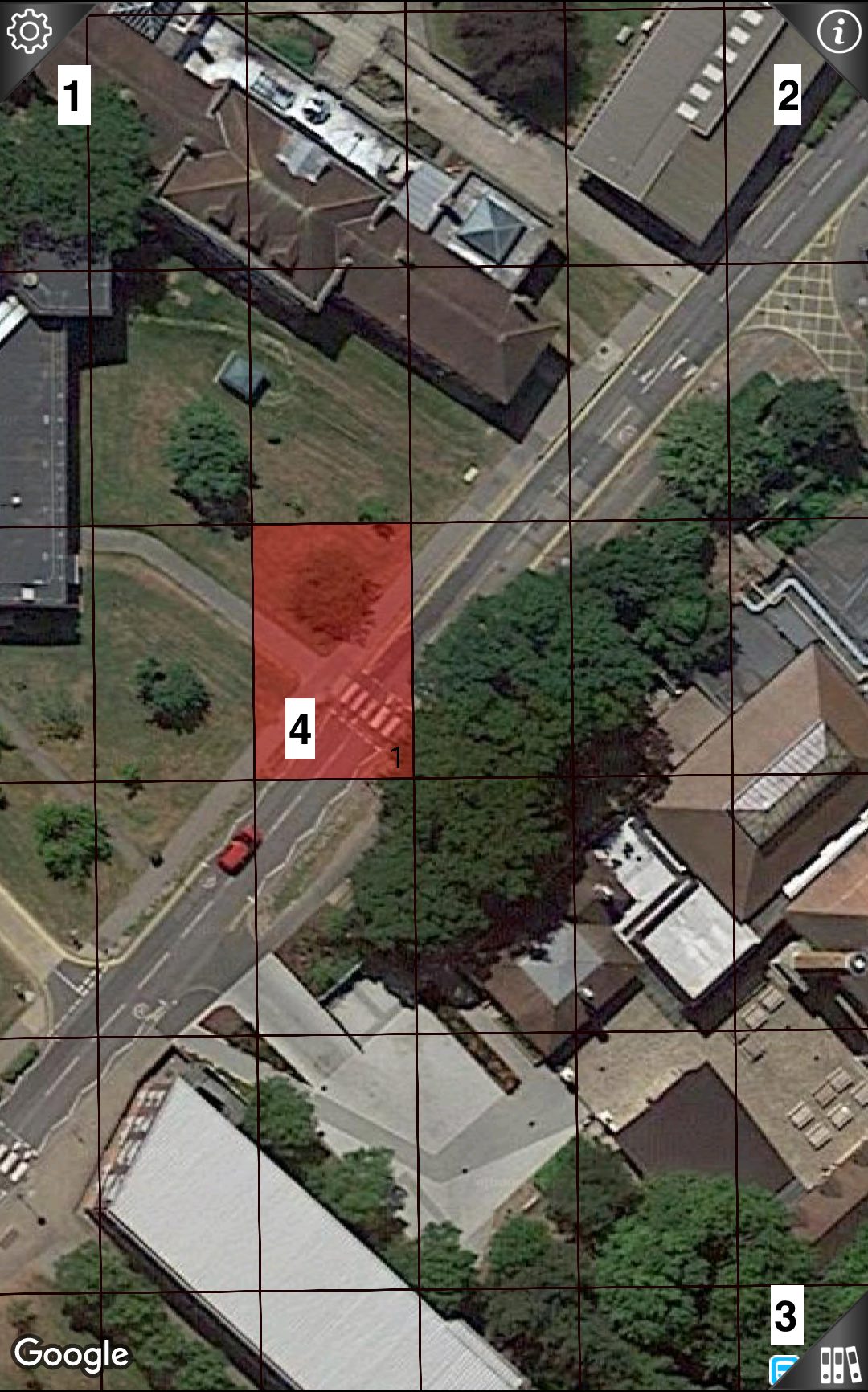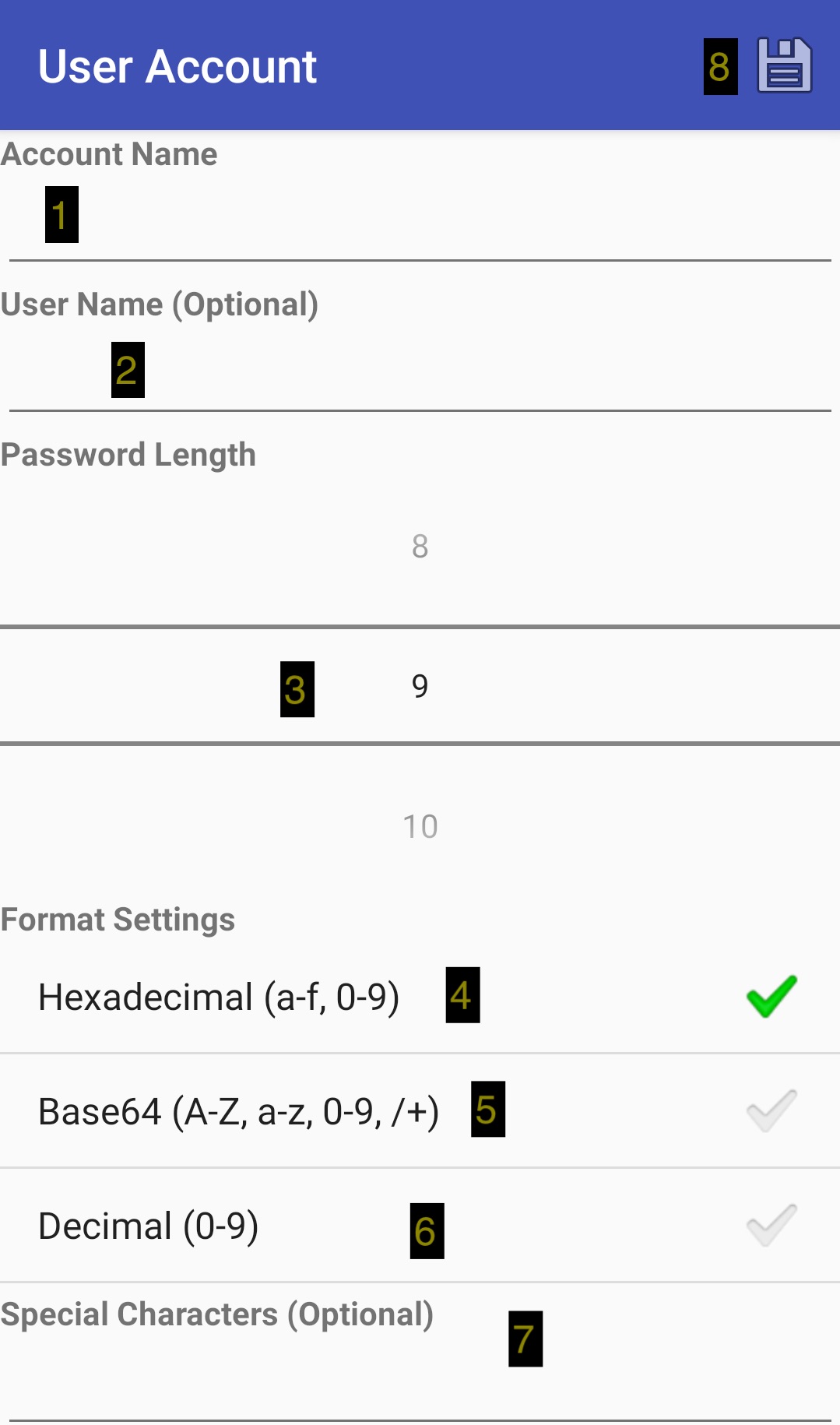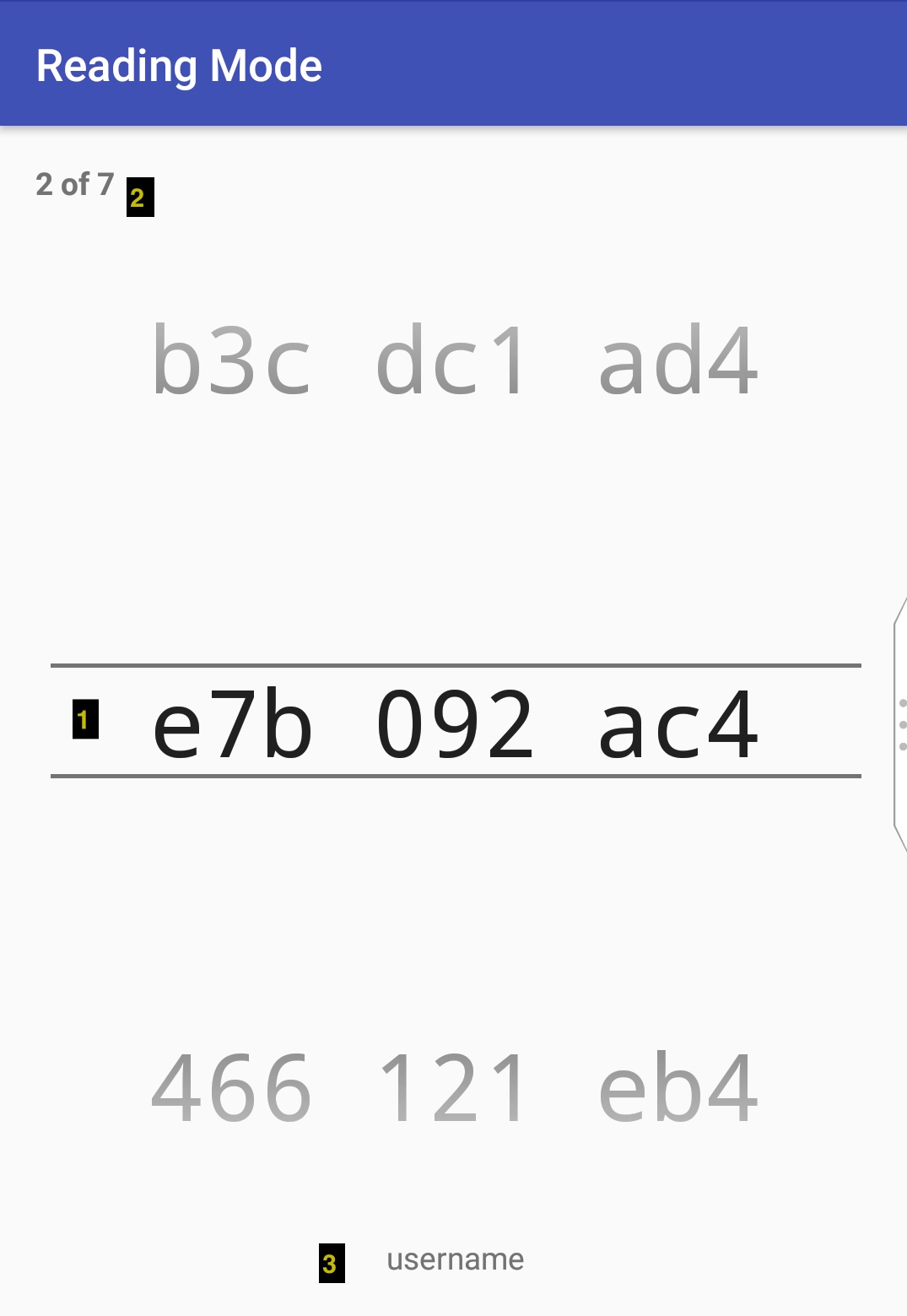In this user manual we highlight the features and options in Passwhere to help users interact with the geographical password system for their online security.
Earth's View
When you launch Passwhere, you will see planet Earth. Search for your favorite location by panning and zooming until the area is divided into rectangular shaped geographical areas. Each rectangle represent a geographical password. You can select the rectangle by long tapping it, it will be shaded when selected (long tap again to unselect). You can choose more than one location to form your strong geographical password.

Earth's View description:
- Settings Corner: Tap the top left corner to enter settings menu.
- Introductory Tutorial: Tap the top right corner to start an introductory tutorial.
- Accounts Corner: Tap the bottom right corner to enter password settings accounts.
- Geographical location: A rectangular shaped geographical area selected by the user by long tapping the area to select it as her geographical location (that is your password). Users can select more than one location on planet Earth.
- Note: That the order in which geographical locations were selected is considered, in other words, picking location A then location B will result in a different password than picking location B then location A. Furthermore, if two users pick the same places in the same sequence and select the same settings for their passwords, the resulted geographical password will be totally different, since each map is unique to each user.
User Accounts
In this section we describe user accounts view.

Menu description:
- User Accounts: This section displays accounts password settings, where the user can define the password length and format. Note: Passwords are never stored, these are just password settings.
- Reading Mode: Clicking the icon will displays the selected password in a way that is easy to read.
- Copy: Clicking the icon will copy the password into the clipboard.
- QR Code: Clicking the icon will display the password in a QR code format.
- Add: Clicking the icon will open a new Account to be added to the list.
- Three Dots Menu: Clicking the icon will show other options, such as Edit account and Delete account.
Adding an Account:
Clicking Add (5) will open the add account view:

Description:
- Account Name: The name of the account which holds password settings.
- User Name: The user name used to login.
- Length: Length of the password.
- Hex (Default): Hexadecimal representation of the password (tap to select).
- Base64: Base64 representation of the password (tap to select).
- Decimal (Digits only): Decimal representation of the password (tap to select).
- Special Characters (Optional): Add up to 5 special characters to the password to bypass outdated password policies that exist at some websites. Special characters can be: !#$%&()*+,-./=?@[]^_{|}
- Save: Save account locally.
Note: After saving the account, any changes or edits to: Account name, password length, password format, or adding special characters will change the password.
Reading Mode:
Clicking Reading Mode (2) will open the the reading mode view:

This view will divide the password into different parts for better readability in a slider (space is not included in the password):
- Generated Geographical Password: The second part of the password.
- Current visible part: Shows the number of the currently visible part of the password and how many parts left.
- Username: User name used to login.
How Geographical Passwords are generated instantly in Passwhere:
- Something You Know Stage:
- When the user long tap on a geographical location, the geographical characteristics of the selected place (or places) will be extracted.
- These geographical characteristics are then concatenated with account password settings of the selected account.
- Something You Have Stage:
- A keyed-hash message authentication code (HMAC) operation will be preformed where the key is the user's 256 bit randomly generated personal key (generated during installation) and the message is the result of the value obtained from the something you know stage (i.e. geographical characteristics+account password settings). The result of the HMAC operation is the geographical password.
Note: Some websites provides a search space calculator for randomly generated passwords, which helps users assess the quality of their passwords, such as GRC's Search Space Calculator.
QR Code:
Clicking QR Code (3) will open the QR Code view:

Description:
-
The password.
-
QR Code representation of the password.
Settings
After clicking the upper left corner of Earth's view, Passwhere settings menu will open.

Description:
- Your Places: This section displays the selected places in the order they have been selected. When the user long tap a geographical location on planet earth, a link to the place will appear. Clicking the link will move the map view to the selected place. This helps the user keep track of the places she has selected.
- Map Settings: This section displays the settings for the map (Passwhere is using Google Maps).
- Satellite: Displays the map based on satellite information.
- Terrain: Displays the map based on terrain information.
- Store Location for Fast or Offline Access: Turn the switch on to store the selected geographical location(s) securely and locally in the smartphone. A biometric authentication dialog box should appear (after Passwhere restart) to allow the user to access her passwords without the need to allocate the places on the map manually. It will also allow for offline access. Turn switch off and it will delete the location stored in the smartphone. This feature requires enabling biometric authentication at user's device (please refer to your smartphone manual for further details).
- Backup: Since Android 6, Google has introduced a feature called Auto Backup for Apps, which is enabled by default, and will backup user's app data when the smartphone is idle, plugged into a charger, and has the WiFi on. Such mechanism will restore the user's Key and Accounts settings should Passwhere get uninstalled by accident or lost.
- Help & About:
- Help and Tutorial: Clicking this option will open this help page on browser.
- About: Clicking this option will open the about page on Passwhere's website on browser.






